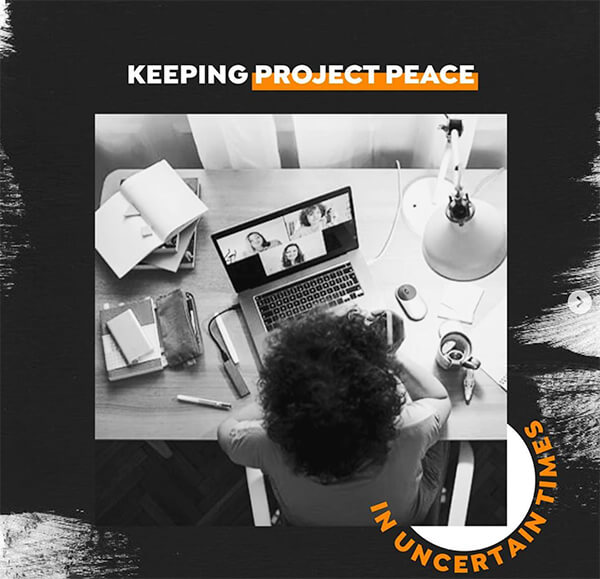
Still, teams have had to adapt to new methods of communicating everything from project budgets and timelines to how to review design deliverables together over Zoom. At RYNO Strategic Solutions, we’re fortunate to be a digital marketing-focused agency to begin with, so much of our work is done “remotely” in our own spaces, even when we’re all in the office together.
While we’ve not been immune to the challenges of keeping projects running smoothly this year, we have learned a lot so far about how to make physical distance work in our favor, while still delivering high-quality work for our clients.
How do we do it?
1. Frequent (Over)communication:
As the agency’s sole digital project manager, I “meet” daily (currently via Slack) with both our design and development teams. This quick 15-minute check-in is designed around two questions directed toward individual team members, with information delivered in the group setting:
First, what’s on your plate today? Second, how can we, your team, help you?
Not only does this check-in series created by give Marcus Buckingham us an idea of what they view as their priorities based on the prior day’s or week’s work, but it also gives us the chance to realign if those priorities need to shift. This is the chance for both teams to request any assistance from their colleagues, whether jumping in on some website updates if someone’s plate is overloaded or requesting a timeline negotiation between the account management team and me.
This isn’t the only time we talk during the day, though – we maintain sacred monthly 1-1 meetings via video call, and make sure to remain available to each other on Slack, text, or by impromptu video calls every day.
2. Minimize Interruptions
That being said, “remaining available” doesn’t mean answering everything right away.
I’m a firm believer this should be the expectation even in-office, and that one of the most helpful things a project manager can focus on is serving as the point of contact for important, but potentially time-derailing interruptions from other teams. Oftentimes, I can help answer questions from other departments that may previously have gone directly to the design or development teams. This not only allows them to continue their current task, but helps give me insight into what might be coming into the production pipeline next. Ideally, it can also help other departments out of a pinch!
This became especially important as our teams adjusted to working remotely and not being able to collaborate in person. Where previously a team member from another department could walk into the design office anytime with a question, it now becomes a matter of answering Slack messages or catching up on emails. With the constant communication happening regarding the production team’s priorities between them and me, we’ve been able to identify which tasks can wait for a response, and which might warrant a more immediate reply.
3. Don’t be afraid to change it up
It might sound nuts to even think about changing the processes multiple departments use in a remote environment, but at RYNO we’re all about charging forward with an attitude of, “If not now, when?”
We’ve come across multiple processes that either worked better when our company was a different size or that present new challenges in the remote environment in particular and have faced each one head on this year. Some of the best ways we’ve found to address them have been via a video call with all relevant affected team members, or the department leads that represent them, and then through a well-defined rollout in our weekly all-staff meeting or via email.
Change becomes much less frightening with the context that comes from allowing teams to ask questions as they arise, and also helps make the new processes much more effective for everyone!
At RYNO, projects and processes are living, breathing things just as much as our own team members. We’ve found that by remaining open and adaptable, there’s nothing we can’t solve together, a mentality we look forward to bringing back to the office and celebrating together again in person.